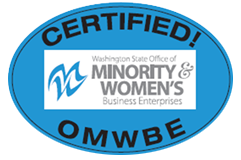We’re back for more accounting terms for you to learn to sharpen your financial vocabulary.
Diversification
Diversification describes a risk-management strategy that avoids overexposure to a specific industry or asset class. To achieve diversification, people and organizations spread their capital out across multiple types of financial holdings and economic areas. The term is also widely used in finance and investing.
Dividends
Dividends represent portions of the company’s profits paid out to the shareholders. Investors are often paid in cash, but may also be issued stock, real property, or liquidation proceeds.
Double-entry bookkeeping
Double-entry bookkeeping is an accounting method that requires entries of credits and debits for each financial transaction. This method relies on the accounting equation of Assets = Liabilities + Equity.
Enrolled Agent
An enrolled agent (EA) is a finance professional who has passed and has demonstrated expertise and is able to legally represent people and businesses in Internal Revenue Service (IRS) encounters. EAs must earn licensure from the IRS by passing a three-part exam or accruing direct experience as an IRS employee.
Equity
Equity is assets minus liabilities. Owners’ equity refers to the percentage of stock that represents a person’s ownership interest in a corporation. Equity is owned by business owners and shareholders.
Expenses (fixed, variable, accrued, operation)
The amount spent for an item or purpose. This is classified into fixed, variable, accrued and operational.
- Fixed expenses (FE) – payments like rent that will happen in a regularly scheduled cadence.
- Variable expenses (VE) – expenses, like labor costs, that may change in a given time period.
- Accrued expense (AE) – an incurred expense that hasn’t been paid yet.
- Operation expenses (OE) – business expenditures not directly associated with the production of goods or services—for example, advertising costs, property taxes or insurance expenditures.
Fixed Asset
Fixed asset is an asset used for a long period, such as buildings and equipment.
General Ledger
Ledgers are used to keep records of the businesses’ transactions. The general ledger (GL or G/L) is the master account containing all ledger accounts. It holds a complete record of all transactions taking place within a specified accounting period.
Generally Accepted Accounting Principles (GAAP)
Generally accepted accounting principles, or GAAP, are standards that encompass the details, complexities, and legalities of business and corporate accounting. The Financial Accounting Standards Board (FASB) uses GAAP as the foundation for its comprehensive set of approved accounting methods and practices.
Gross Margins
Gross margins describe a company’s profitability after subtracting the cost of goods sold. It is calculated by dividing the same period of gross profit by revenue for the same period.
Gross Profits
Gross profit or gross income, is the value of the products and services sold by a business before factoring in the cost of goods sold. If the gross profit is a negative number, it is instead called a gross loss.
Income Statement
A financial statement that reflects the difference in revenue, expenses, gains and losses over a specific period. The data is used to determine a company’s net income.
Inflation
Inflation is the rate in the increase of costs of goods and services over a given period of time.
Insolvency
A state where an individual or organization can no longer meet financial obligations with lender(s) when their debts come due.
Inventory
Inventory describes assets that a company intends to liquidate through sales operations. It includes assets being held for sale, those in the process of being made, and the materials used to make them.
Insured Account
An insured account is covered by a federal or private insurance organization which may be an account at a bank, savings and loan association, credit union or brokerage firm covered by a federal or private insurance organization.
Internal Audit
An internal audit checks a company’s internal controls, corporate governance, and accounting processes.
Invoice
An invoice is a commercial document that lists the goods or services with their corresponding amount and records the transaction between the buyer and the seller.
Journal Entry
A journal entry is used to record a business transaction in the accounting records of a business. It is usually recorded in the general ledger; alternatively, it may be recorded in a subsidiary ledger that is then summarized and rolled forward into the general ledger. The general ledger is then used to create financial statements for the business.
We’re not quite done yet. Stay tuned for more accounting terms in the next blog!
Looking for the right accounting and finance firm? Consult one of our high-caliber recruiters at recruiting@seattlefinancial.com or call us at 206.343.8732.
Interested applicant? #FindYourPath with Seattle Financial. Click on the Job Seeker tab and you might find the right opportunity for you.




